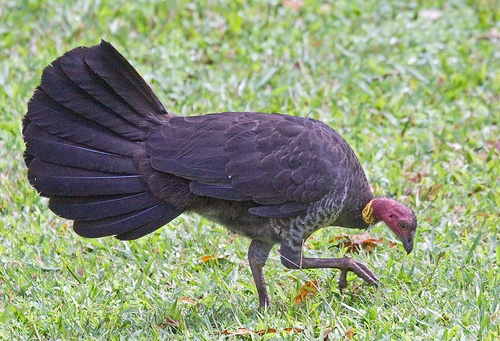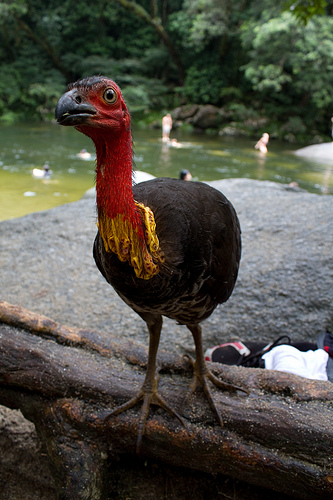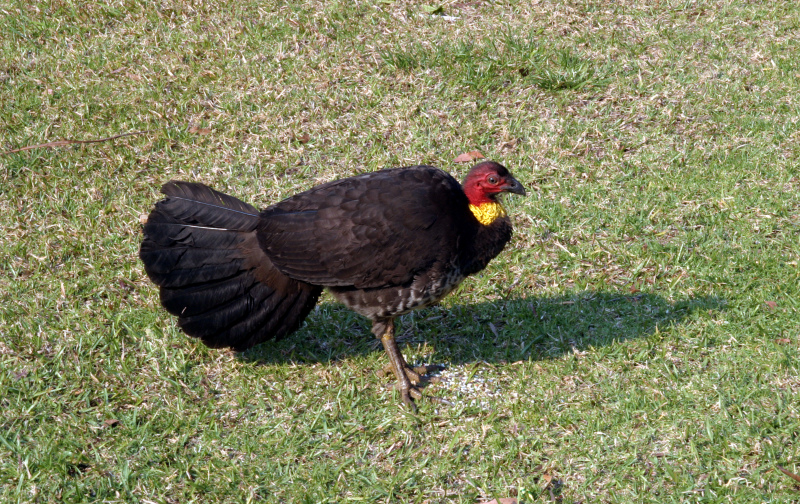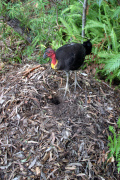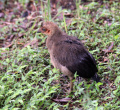Colours
Distinguishing features
It is a spectacular large bird with black feathers and a red head. It has a prominent, fan-like tail flattened sideways, and its plumage is mainly blackish, but with a bare red head, and a yellow (in the nominate subspecies) or purple wattle (in A. l. purpureicollis).
The male's wattle becomes much larger during breeding season, often swinging from side to side as they run. The males' heads and wattles also become much brighter during the breeding and nesting season.
The underside of the body is sprinkled with white feathers, more pronounced in older birds. (Wikipedia)
Size
- From 60 cm to 75 cm (Length of specimen)
Wingspan
- Up to 90 cm
Synonyms
Distribution
Distribution and habitat preferences
It is found in eastern Australia from Far North Queensland to Illawarra in New South Wales. The Australian Brushturkey has also been introduced to Kangaroo Island in South Australia.
It inhabits rainforests and wet sclerophyll forests, but can also be found in drier scrubs. In the northern part of its range, it is most common at higher altitudes, but individuals move to the lowland areas in winter months. In the south, it is common in both mountain and lowland regions. (Wikipedia)
Behaviour
The species is communal, forming communal nests. A typical group consists of a dominant male, one or more younger males and several females. They build large nests on the ground made of leaves, other combustible material and earth, 1 to 1.5 metres high and up to 4 metres across. The eggs are hatched by the heat of the composting mound which is tended only by the males who regulate the temperature by adding or removing material in an effort to maintain the temperature of the mound in the 33–35°C incubation temperature range. The adult male checks the temperature by sticking its beak into the mound. (Wikipedia)
